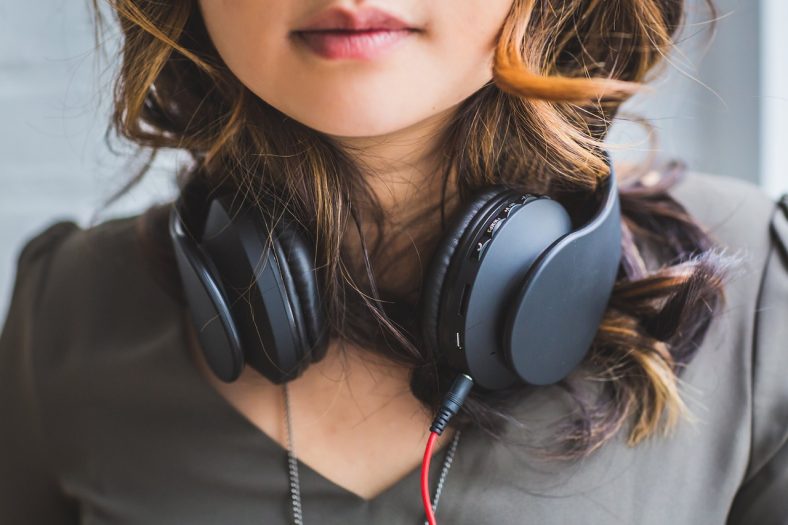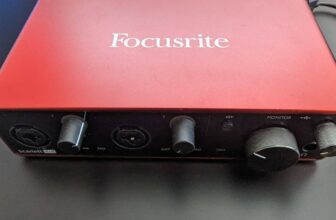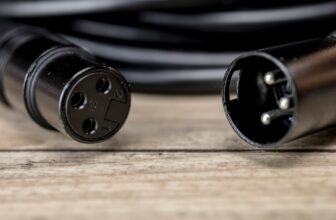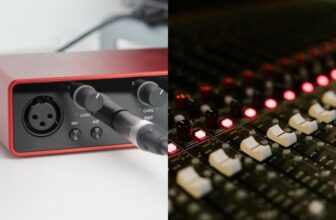Mono vs Stereo Sound – What Are the Differences?

Although the primary difference between ‘mono’ and ‘audio’ is the number of channels they use and send to the speakers, this has quite an impact on the output sound. So what are they and why do we use them? Read on to find out:
Contents
- Differences Between Mono And Stereo
- Benefits Of Stereo Audio
- Benefits Of Mono Audio
- Recording: Mono vs Stereo
- Gaming: Which Is Better?
- Are Headphones Mono Or Stereo?
- Is My Amp Mono Or Stereo?
- Dual Mono vs Stereo
- Mono Reprocessed For Stereo
- How Do I Convert A Mono Signal To Stereo?
- How Do I Convert A Stereo Signal To Mono?
- Summary
Differences Between Mono And Stereo
- Mono refers to the use of only one channel during the conversion of an audio signal to a sound. Stereo uses two or more channels to do the same.
- Mono does not offer spatiality whereas stereo is capable of a surround-sound effect.
- Stereo sound can be found in films, video games, and television. Mono can be found in hearing aids, telephone networks and is the standard for radiotelephone communication.
- AM radio uses mono audio and FM radio uses stereo.
- ‘Mono’ refers to monoaural or monophonic sound. ‘Stereo’ stands for stereophonic sound.
Benefits Of Stereo Audio
For music listening, stereo audio lets you create a phantom image. This can be multi-dimensional and in 3D.
In music-making or sound engineering, you can design your sound in a wider stereo field. Panning your sound, manipulating it to move from one speaker to another or even within the track itself is possible using stereo.
Benefits Of Mono Audio
Mono audio is more consistent. At a gig, every member in the audience hears the same thing. There is no difference in the volume. This also reduces the chances of any phasing issues that might occur.
When using BlueTooth headsets or earpieces, we often use them for only one ear. Mono ensures that we can hear all elements with clarity.
Recording: Mono vs Stereo
When we record instruments, we can use different techniques to achieve the sound we want. For example, to record a guitar through a tube amp, we will often place a mic on one of the speaker cones. This gives us a mono signal.
However, we can choose to place an additional mic at a slight distance or on another cone. This will give us a stereo effect when we listen to both of these channels together.
It is important to take into consideration that stereo requires two channels. So unless it is a must, using it on all elements is unnecessary.
You can use a mono output for a bass guitar but for a drum kit, you may want to place an additional overhead mic to capture the room sound.
Too many mics and too many channels can often confuse many things that are going and lead to phasing issues and feedback.
Instead of using stereo recording techniques, you can simply record overdubs.
Gaming: Which Is Better?
Video games, be it for consoles or computers are specifically designed for an immersive experience. Sound designers painstakingly design the music for stereo listening and playback. Here, mono does not do them the most justice.
If you have played any recently made game on the console, then you will notice that your controller will often vibrate and emit a sound that is different from your speakers. This is to create a 3D environment. Since all computers have stereo sound, you will notice that sounds will appear from different directions. This is possible because of stereo.
Are Headphones Mono Or Stereo?
Headphones are generally stereo devices. When you listen to music on headphones, you will notice that the sound will come from multiple directions. Most modern music has effects such as panning and spatial sound design.
If you are listening to a band with two guitar players, then the guitar track in your left ear will be different from the one in your ear. Sometimes you will also notice that elements of the music travel around your head, from one direction to the other. This is stereo in action.
Although mono headphones are still available, they are no longer as popular. The industry standard for recording studios was previously mono headphones. But that is no longer the case.
Is My Amp Mono Or Stereo?
Most amplifiers are mono. They have one audio source and do not have left and right channels. Even though your amp may have many speaker cones inside, the audio input comes from one primary source. This makes them mono devices.
While there are some stereo amps available, they have not proved to be very popular among musicians.
Dual Mono vs Stereo
‘Dual Mono’ means that there are two different channels that are completely unrelated and separate from each other. A good example of this is a preamp. One channel can be used for vocals and the other for an instrument. These will usually be routed completely differently and have their own settings.
Stereo channels refer to two signals that are related to each other. These are usually the left and right channels. When you record a stereo vocal track on any DAW, you will notice that there are two waveforms and they correspond to the left and right.
Mono Reprocessed For Stereo
If you have access to all the stem files in a music project, then you can create a stereo effect by panning the different tracks in different directions. This is best found in band music in which the different instruments are panned differently. They often emulate where the members stand on the stage and what an audience hears during a live performance.
This will give your music a stereophonic effect since the different elements will play from different directions. When many things are going on in a song, if all the sounds come from the center then it sounds cluttered and the elements become indistinguishable from one another. Music is mixed in stereo to avoid this.
How Do I Convert A Mono Signal To Stereo?
One of the easiest ways to convert mono into stereo is by duplicating the channel and using a slight pan on each.
There are many plugins available for DAWs such as vocal doublers which will not only duplicate the track but also add effects such as a minute delay or reverb to make it sound truly stereophonic.
How Do I Convert A Stereo Signal To Mono?
If the music has already been recorded, almost all DAWs will give you an option to convert your stereo track to mono. In case you want to record something with stereo output, you can use an RCA cable that has a stereo input and a mono output. This will automatically convert the signal into mono.
Summary
To make and listen to music, we need both Mono as well as Stereo signals. Both have their advantages and disadvantages. But more importantly, both have different uses in music. A combination of both makes for the ultimate experience.





